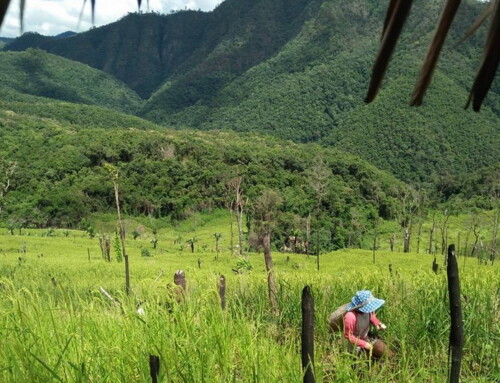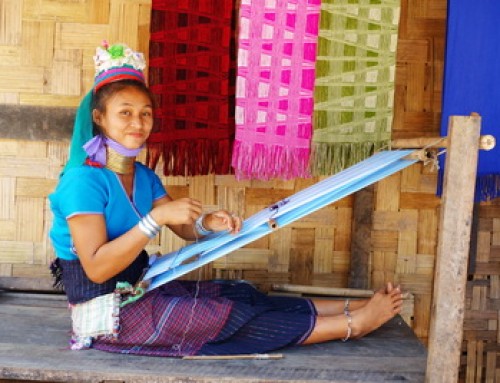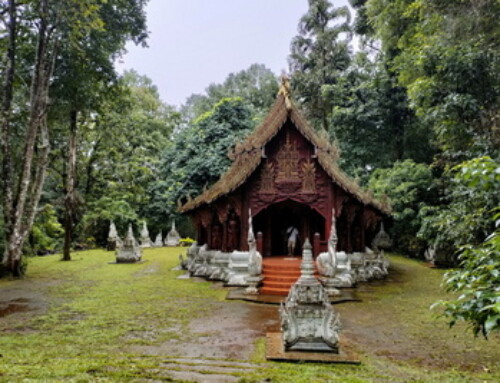Wat Jong Kham and Wat Jong Klang: Timeless Twin Temples of Mae Hong Son

🧭 A Local Legacy Set in Serenity
Welcome to Mae Hong Son’s spiritual heart. Wat Jong Kham and Wat Jong Klang are more than just religious sites—they’re cultural icons nestled on the southern banks of the shimmering Chong Klang Lake. With their reflections glowing on the water at sunrise or twilight, it’s no wonder these two temples are the most photographed and revered places in town.
Wondering which temple is which? Just stand facing the lake. On your left lies Wat Jong Kham, the elder sibling, while the temple with the eye-catching golden-and-white chedi on your right is Wat Jong Klang.

This is the signature picture of Mae Hong Son you will see on many postcards.

There is a small night market which selling a variety of Thai dishes, souvenirs, hill tribe handicrafts and woven textiles.
🏯 Wat Jong Kham: The Ancestral Heart of Mae Hong Son

Founded in 1827 during the reign of Phraya Singharat Racha, Mae Hong Son’s first governor, Wat Jong Kham is the oldest temple in the town. It was originally built by Tai Yai (Shan) artisans—whose descendants still make up a significant portion of the local population—and reflects the best of their intricate craftsmanship and Buddhist devotion.
The highlight? A 9-tiered castle-style roof that symbolizes the heavens and nobility in Shan beliefs. Though a fire in 1970 damaged much of the original wooden structures, the restored temple retains many elements of traditional Tai Yai art, including delicate metal fretwork and ornate facades.
Inside, visitors will find Viharn Luang Por Tho, home to the temple’s most revered image: a massive seated Buddha with a lap width of 4.85 meters. Cast in 1926 by Burmese artisans, this image is a replica of the famed Buddha at Wat Suthat in Bangkok.


🏛️ Wat Jong Klang: Living Museum of Shan Culture

Just a short walk away, Wat Jong Klang offers a distinct yet complementary charm. The standout feature here is the exquisite Mon-style pagoda, adorned with tiered umbrellas and intricate detailing.
Inside the wiharn, the magic unfolds. Three of its walls are entirely decorated with glass paintings depicting the Jataka tales—the previous lives of the Lord Buddha—as well as the life of Prince Siddhartha. These artworks, brought from Mandalay over a century ago, are vivid, storytelling masterpieces. The captions, in Burmese, highlight the cross-cultural connections between Mae Hong Son and Myanmar.
In a back room, the temple houses a collection of 33 hand-carved wooden dolls, representing scenes from the Vessantara Jataka. These are not just decorative but are considered rare antiques of religious and historical significance.


🌅 Beyond the Temples: Atmosphere, Community, and Culture
The setting couldn’t be more serene. The lakefront location, ringed by walking paths and benches, is perfect for contemplation, photos, or a simple moment of stillness. At dusk, when the temples light up and cast shimmering reflections onto the water, the scene turns magical.
Right outside the temples, especially during high season (October to February), you’ll find the lively Mae Hong Son Walking Street Market. The market springs to life with local foods, handmade crafts, and live music—blending spiritual heritage with everyday community life.
These temples are more than tourist attractions—they are living parts of the town’s identity. Locals frequent them for daily merit-making, seasonal festivals, and rites of passage.
🎉 Festivals and Faith: When the Temples Come Alive
One of the most significant annual events is Poy Sang Long, a Shan ordination ceremony where young boys are adorned like princes and ordained as novice monks. Both Wat Jong Kham and Wat Jong Klang become focal points during this vivid, music-filled procession held every March or April.
Another must-see is the Loy Krathong Festival and End of Buddhist Lent, where locals float decorated offerings on the lake and light lanterns around the temples. This creates an atmosphere that’s both sacred and visually breathtaking.


📝How to get there
Jong Kham and Wat Jong temple is located on Chamnarmsathit Road in the middle of Mae Hong Son town. For more comfortable, we can provide the private tour package for you.
Wat Jong Kham and Wat Jong Klang aren’t just places to admire—they’re experiences that resonate. From ancient stories told in glass and wood, to chants at dawn and lights at dusk, these temples embody the soul of Mae Hong Son.
If you come here looking for beauty, you’ll find it. But stay a little longer, and you’ll feel something even deeper: a quiet reverence, a cultural rhythm, and a timeless connection between people, place, and spirit.
Address : Jong Kham and Wat Jong temple, T.Chong Kham, Mueang Mae Hong Son District, Mae Hong Son 58000, Thailand
Entracce Fee : The temple opens daily 6:00 am. -6;00 pm. Admission is free, donations are highly appreciated
Note : Wheelchair user is accessible
Our services :
- Package tour to Pai – Mae Hong Son (Private group)
Wat Jong Kham and Wat Jong Klang Map












Leave A Comment